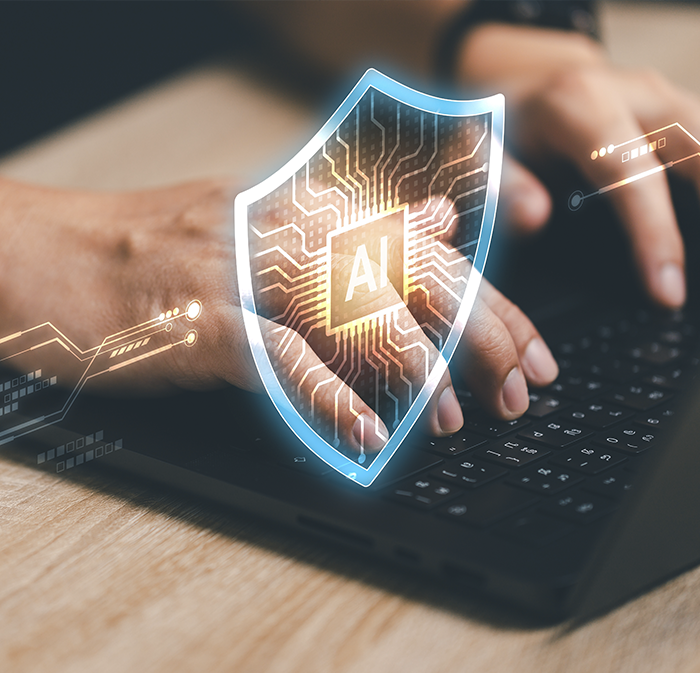The reliance on third-party vendors continues to increase as organizations strive for efficiency, scalability and operational excellence. However, this increasing interconnectedness comes with significant risks.
During a recent Dataminr webinar, Jack Carraway, Dataminr Field CISO, discussed the common pitfalls of third-party risk management and how AI-powered real-time threat detection can act as a game changer in safeguarding digital ecosystems. Here, we explore the key takeaways from the webinar, including limitations of current threat monitoring processes and the transformative role of AI in capturing publicly available data to identify vulnerabilities.
No. 1. The Importance of Third-party Risk Management
The threat landscape for third-party risk is exponentially increasing. According to the 2024 World Economic Forum Global Cybersecurity Outlook report, 41% of organizations that experienced a material incident say a third party caused it.
Factors such as expanded attack surfaces due to the proliferation of external products, SaaS solutions and open-source code have made businesses more vulnerable. More than 60% of organizations work with more than 1,000 third parties, and 95% of commercial code contains open-source components.
These connections introduce challenges that make third-party risk particularly vexing. Organizations typically lack direct control over third-party operations, face constrained resources for monitoring and must contend with threat actors who often view third-party vendors as softer targets.
The result? Threats that ripple through the supply chain, as seen in major incidents like the Change Healthcare attack and the CrowdStrike outage, both of which caused widespread disruptions to industries like healthcare, transportation and telecommunications. For instance, the CrowdStrike incident impacted more than 40% of scheduled flights globally in a single day, costing the global airline industry billions of dollars.
No. 2. The Role of Real-time Threat Detection
Addressing third-party risk at scale requires a new paradigm, particularly as traditional methods such as vendor surveys and attestations fall short. These approaches often provide only snapshots in time, failing to capture growing threats in real time. This is where AI-powered real-time threat detection takes center stage.
By leveraging AI-powered real-time threat detection tools, businesses are notified of external threats to their organization and third-party vendors—in real time—allowing for timely and effective response. This enables them to better secure their supply chains and vendor ecosystems.
Benefits of implementing AI-powered real-time threat detection tools, like that of Dataminr Pulse for Cyber Risk, includes:
- Access to a massive pool of public data. Dataminr’s proprietary AI leverages more than one million data sources globally, processing 43 terabytes of data daily across various modalities such as text, image, video and audio.
- Dataminr’s AI-driven alerts also seamlessly integrate with SIEM and SOAR platforms, as well as other security tools. This maximizes the value of existing cybersecurity investments, enhances collaboration across departments and facilitates faster threat remediation.
- Ability to customize alerts. Organizations receive actionable alerts tailored by relevance, such as severity levels, specific geolocations or key third-party vendors. Filtering threat intelligence in this way ensures cyber teams focus on the most critical issues.
- Continuous monitoring beyond perimeters. Unlike traditional perimeter-based monitoring, Dataminr’s AI platform extends visibility into external threats by scanning areas like the deep and dark web, marketplaces, code repositories, alternative social media platforms and government advisories. This expanded view provides critical insights into evolving risks that could otherwise go unnoticed.
Take for instance the cyber attack against Johnson Controls in 2023. Dataminr alerted customers to the incident a day before the company’s confirmation. The alerts were generated from signals extracted from public data, which included exfiltration details and evidence of ransomware actor involvement. This early insight made the difference between proactive threat mitigation and reactive crisis management for customers impacted by the cyber attack.
Similarly, Dataminr’s real-time alerts—with insights gleaned from the deep web—about the ConnectWise vulnerabilities illustrated how early warnings could offer businesses critical lead time to patch exploited vulnerabilities.
No. 3. Actionable Insights for Businesses
The need for robust third-party risk management is no longer negotiable in today’s cyber landscape. Here are recommendations for organizations looking to fortify their defenses:
- Adopt real-time threat detection tools. Invest in solutions that offer continuous threat monitoring, predictive capabilities and integration with your security ecosystem.
- Broaden visibility beyond internal systems. Recognize that many threats originate externally—in the vendor landscape, open-source vulnerabilities or even geopolitical events. Ensure your cybersecurity strategy includes monitoring for risks beyond your digital perimeter.
- Regularly update and train AI models. Trustworthy and actionable results from AI depend on domain-relevant data and ongoing refinement via human oversight. Partner with vendors that demonstrate expertise in building scalable and reliable AI systems.
- Streamline processes and collaboration. Break silos between teams managing risk. Use centralized threat intelligence platforms to enhance coordination, improve speed of response and reduce manual processing of irrelevant data.
The AI era has ushered in both opportunities and challenges for businesses. While third-party connections promise greater efficiency and innovation, they also demand new levels of vigilance. By adopting AI-driven real-time threat detection, organizations can close critical gaps in their cybersecurity frameworks, ensuring they remain resilient in an increasingly interconnected world.

Third-party Risk in the AI Era
Watch this webinar to learn more about how AI-powered real-time threat detection helps organizations strengthen their third-party risk management.
WATCH ON-DEMAND WEBINARThe Importance of AI and Public Data to Address Third-Party Risk
Uncover strategies to stay ahead of cyber threats, mitigate vulnerabilities, and strengthen resilience against ever-evolving cybersecurity challenges.
Download Ebook




